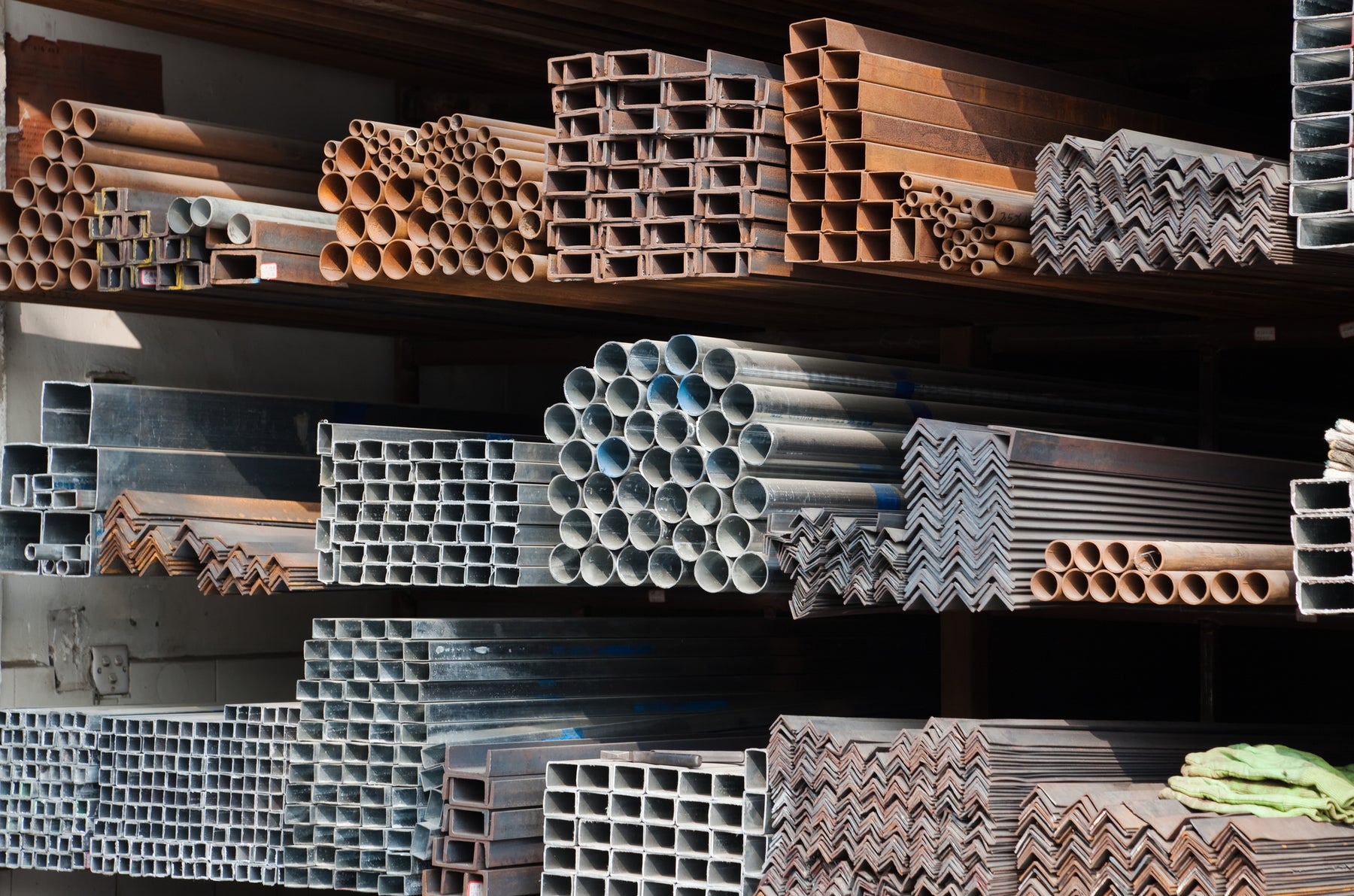
Stainless steel verses "normal" mild steel fabrication.
What’s the Difference Between Stainless Steel and Mild Steel?
The basic difference is between the two is that mild steel (also called low carbon steel or black steel) is alloyed using carbon whereas stainless steel is alloyed with chromium, nickel, molybdenum and other elements to improve its mechanical and chemical properties. The two different alloy sets produce very different results especially in terms of rust or corrosion resistance, but also in terms of malleability and ease of fabrication, as well as cost. Stainless Steel gets its name from the feature that its surface is not easily stained or rusted.
There are many types of Stainless Steel depending on the alloy mix – all with different properties and with different cost bases, for example: 201, 304, and 316 (also called Marine Grade Stainless Steel). All Stainless Steel varieties have better rust or corrosion resistant qualities than mild or black steel, to varying extents. Highly polished 316 Stainless steel is considered to have the best resistance to rust or corrosion and therefore it ids often found in marine applications where it is likely to come into contact with salt / sea water.
Advantages of Stainless vs. Mild Steel
Stainless Steel:
- Higher rust and corrosion resistance.
- Stronger and harder.
- When fabricated properly, it is suitable for food preparation and specialized manufacturing environments
- A unique and attractive appearance unlike other steels
Mild Steel:
- One of the most common and versatile metals
- More malleable
- Less brittle
- Enables customers to achieve lower cost to their projects
- Cheaper to buy than Stainless Steel.
When to Use Stainless Steel vs. Mild Steel
Stainless Steel:
- When attractive appearance of the end project is important.
- In the food, marine, medical, construction and automotive industries.
- When you need more strength for a project.
- When you do not want the finished project to rust.
Mild Steel:
- If you aren’t going to see the steel surface, i.e. the final piece is going to be painted or coated.
- Where stainless is not a cost effective option.
- If you need steel for structural components that are internal to the piece and not visible or effecting the overall visual concept.
- If you are bending the metal
Abrasive Selection
The correct abrasive selection when working with stainless steel is paramount for the success of your job. Any steel or iron item which comes in contact with stainless steel is a potential source of contamination especially when it is hot – such as you might get from the sparks from a cutting wheel or grinding disc.. This includes not only abrasives, like cutting discs and flap discs, but also chains, slings, metal shipping containers, work benches, tools and fork lift trucks. Contamination means the surface of the stainless steel will oxidize (rust) given the appropriate conditions (warmth, moisture, and oxygen).Therefore, the most important aspect to remember when working with stainless steel is that all abrasives must be iron free (or INOX graded) otherwise they will damage the stainless with rust spots. INOX is simply a French abbreviation meaning “stainless steel”.
Cutting Discs for Metal
Inox abrasives, like INOX cutting wheels, are iron (Fe) free which means they can be used on stainless steel as well as most other metals including mild steel, brass and aluminum. Industrial abrasives, like cutting discs that are not INOX can only be used on mild (black) steel. Thin cutting5" 125mm Metal Cutting Discs Sheetmetal wheels either 0.8mm or 1mm thick are the preferred option whilst working with stainless. Because they are slightly thinner, these wheels help minimize heat build-up by allowing for a faster cut as less material is being removed in the process. As a rule of thumb, the thinner the cut, the faster the cut and less material must be removed — an important detail when working with more expensive material like stainless steel. Labor savings because less clean-up work removing heat marking etc is an important consideration for businesses.
Smith & ARROW Cutting Discs are proven quality wheels, manufactured without the addition of ferrous (Fe), chlorinated (CI) or sulphurous (S) fillers that cause metal corrosion. All Smith & ARROW cutting discs are INOX grade and are perfect for cutting both stainless steel and mild steel. These cut off wheels are available in a range of sizes and thickness including the popular 100mm (4”), 115mm (4.5”) & 125mm (5”), and the large 350mm (14”) Drop Saw blades.
Sanding and Grinding Discs
When grinding or sanding Stainless Steel generally coated abrasive products are used as opposed to the standard Grinding Discs that are used on mild or black steel. For sanding or grinding Stainless Steel, the coated abrasives grain must be either zirconia or ceramic as both are iron free INOX grade). As a rule of thumb, generally for metalworking, there are three primary coated abrasive materials:
• Aluminium oxide (brown in colour) —This grain is not long lasting and can only be used on mild steel. These discs cannot be used on stainless steel because they contain Iron (Fe).
• Zirconia (blue / green colour) — Zirconia (or zirconium) grain is excellent for working on Stainless Steel and other, high-tensile, non-ferrous metals. This iron free INOX grade option is one of the most popular abrasives’ options for metalworkers and DIY users.
• Ceramic (red colour) —Although expensive, ceramics are considered the very best in coated abrasives being both iron free and providing the fastest cut and longest life for heavy sanding and grinding work on stainless or high-alloy materials. Usually this material is used in the lower course grits for heavy stock removal.
NOTE: Not all Zirconia and Ceramics are the same, and like anything, there is a wide range of qualities available – how the material is made including the binding agents used and the quality of the grain can define an excellent product as opposed to something that just looks good.
Smith & ARROW offer Zirconia Sanding Discs, Zirconia Flap Discs, Roloc Discs, Zirconia Linishing Belts, and Ceramic Sanding Discs for all your stainless steel sanding and grinding requirements. These are offered in a large range of grits and sizes for all types of angle grinders, roloc tools and linishing belts.
Wire Brushes for Stainless Steel Projects
Two piece metalwork brush
As mentioned above, stainless steel can become contaminated in many ways, the most frequent of which is by exposing it to iron by using the wrong product. For example, cleaning or finishing with a carbon steel brush on stainless steel may leave a residue because of the iron in carbon steel, leading to rust colour (after rust) on the surface of those pieces. When that happens, the stainless steel itself may not be rusted, but the piece is still considered to be contaminated and the anti-corrosion properties will be diminished. For this reason Smith & ARROW sell a selection of stainless steel hand held brushes for use on your stainless steel projects. Wire brushes are often the best choice when cleaning of welds or material surface is required.
At the end of the day, you need to find the right product for your applications. Using some of the tips here can help narrow down the choices. Remember, when working with stainless steel, never cut corners when selecting or storing products for the job. Given that stainless steel is expected to yield specific performance characteristics and is typically used on higher valued parts, the wrong choice can damage the material and may end up costing you a lot more in the long term.
Smith & ARROW industrial abrasives are the perfect choice when working with stainless steel.
